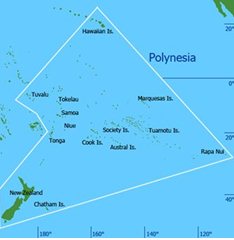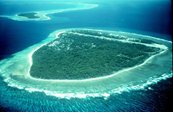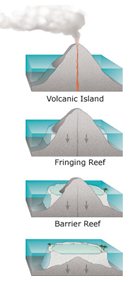The Polynesian expansion
The Polynesian worldThe Pacific Ocean is easily the largest body of water on Earth. It is bigger than the whole of the world’s land mass. Even a country as large as Australia could fit into the Pacific 22 times over! ‘Polynesia’ is a Greek word meaning many islands and occupies a large area in the middle of the Pacific Ocean. The ‘Polynesian Trangle’ is cornered by Hawaii to the north, New Zealand in the south-west and Easter Island in the south-east. Other important countries are Samoa, Tonga and the Cook Islands.
For an area that covers 12 million square miles, the racial and cultural make-up of Polynesia is quite consistent across hundreds of islands. Similar features include language, folklore and the art of tattooing (moko). There are differences however, in religious practices and greetings. |
The natural world
|




